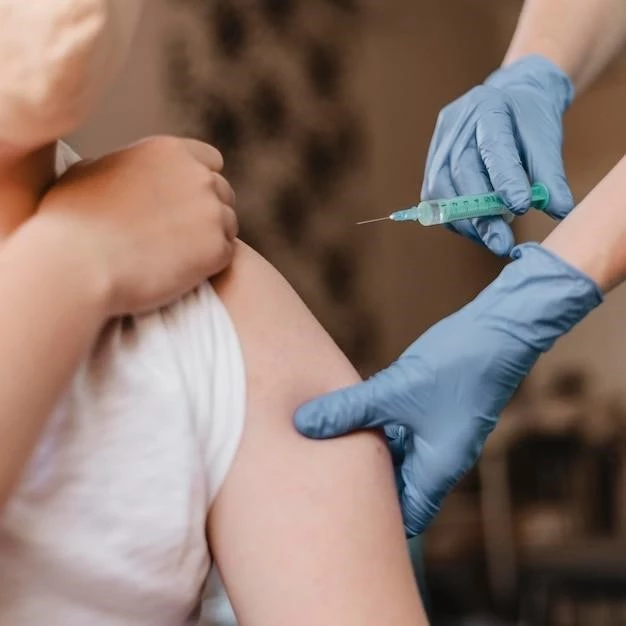Immunodeficiency with Short Limb Dwarfism
When dealing with the genetic disorder of immunodeficiency with short limb dwarfism, it is crucial to understand the complex interplay between the immune system, recurrent infections, skeletal abnormalities, and chromosomal instability. This article will provide a comprehensive overview of the condition, its causes, impact on the immune system, treatment options like bone marrow transplant, and strategies for management and care.
Overview of the Condition
Immunodeficiency with short limb dwarfism is a rare genetic disorder characterized by short stature dwarfism, recurrent infections due to compromised immune system function, skeletal abnormalities, and chromosomal instability. Individuals with this condition may have low levels of lymphocytes and antibodies, making them more susceptible to infections. The underlying mutation leading to this autosomal recessive disorder affects the immune system’s ability to fight off pathogens effectively. Recognizing the symptoms and understanding the genetic basis of this condition is essential for early diagnosis and intervention. Stay informed about the latest research developments and treatment options to manage this complex disorder effectively.
Causes and Genetics
Immunodeficiency with short limb dwarfism is caused by a mutation in a specific gene that leads to abnormalities in the immune system and skeletal growth. This genetic disorder follows an autosomal recessive pattern, meaning that individuals must inherit two copies of the mutated gene (one from each parent) to develop the condition. The mutation affects the production of lymphocytes and antibodies, impairing the body’s ability to fight infections effectively. Understanding the genetic basis of this disorder is crucial for accurate diagnosis and genetic counseling. Stay informed about advances in genetic research and consider consulting with a genetic counselor to assess the risk of passing on the condition to future generations.
Symptoms and Diagnosis
Common symptoms of immunodeficiency with short limb dwarfism include short stature, recurrent infections, skeletal abnormalities, and chromosomal instability. Individuals may experience frequent respiratory or skin infections, delayed skeletal maturation, and a higher risk of certain types of cancer due to the genetic mutation affecting the immune system and bone development. Diagnosing this complex disorder involves genetic testing, immunological assessments, and imaging studies to evaluate skeletal abnormalities. Early detection of symptoms and a comprehensive diagnostic approach are essential for timely intervention and management of the condition. Consult with healthcare professionals specialized in genetic disorders for accurate diagnosis and personalized care planning.
Impact on the Immune System
Immunodeficiency with short limb dwarfism significantly affects the immune system’s ability to defend against infections. The mutation underlying this genetic disorder impairs the production of lymphocytes and antibodies, weakening the body’s immune response. As a result, individuals with this condition are more susceptible to recurrent infections, which can be severe and difficult to treat. The compromised immune function may also lead to increased inflammation and autoimmune reactions. Understanding the impact of this disorder on the immune system is crucial for implementing strategies to prevent infections, manage symptoms, and support overall health. Consult with immunologists and infectious disease specialists to develop a customized care plan tailored to the specific immune system challenges associated with this genetic condition.
Treatment Options
When managing immunodeficiency with short limb dwarfism, treatment options aim to address both the immune system deficiencies and skeletal abnormalities associated with the condition. Strategies may include antibiotic therapy to prevent and treat infections, immunoglobulin replacement to boost antibody levels, and growth hormone therapy to support skeletal growth in individuals with short stature dwarfism. In severe cases, a bone marrow transplant may be considered to replace defective immune cells and improve immune function. It is essential to work closely with a multidisciplinary team of specialists, including immunologists, endocrinologists, and orthopedic surgeons, to develop a comprehensive treatment plan tailored to the individual’s unique needs. Stay informed about emerging therapies and advancements in the field of genetic disorders to explore all possible treatment options for managing this complex condition effectively.
Management and Care
Effective management and care for individuals with immunodeficiency with short limb dwarfism require a holistic approach that addresses both the medical and psychosocial aspects of the condition. Regular monitoring of immune function, bone development, and growth parameters is essential to detect and manage potential complications early. Implementing preventive measures such as vaccinations, infection control practices, and a healthy lifestyle can help reduce the risk of recurrent infections. Physical therapy, orthopedic interventions, and psychosocial support are also critical components of care to promote optimal physical and emotional well-being. Work collaboratively with healthcare providers, genetic counselors, and support groups to ensure comprehensive care and empower individuals and their families to cope with the challenges associated with this genetic disorder.
Research and Future Outlook
Ongoing research into immunodeficiency with short limb dwarfism aims to uncover new insights into the genetic mechanisms underlying the condition and develop innovative treatment approaches. Advancements in genetic sequencing technologies and immune system modulation hold promise for improved diagnosis and personalized therapies. Collaborate with research institutions, advocacy groups, and healthcare providers to stay informed about the latest scientific discoveries and clinical trials in the field of genetic disorders. Participating in research studies may provide access to cutting-edge treatments and contribute to advancing knowledge about this rare condition. By supporting research efforts and fostering collaboration, there is hope for continued progress in enhancing outcomes and quality of life for individuals affected by immunodeficiency with short limb dwarfism.
Conclusion

In conclusion, immunodeficiency with short limb dwarfism presents complex challenges affecting the immune system, skeletal development, and overall health. Understanding the genetic basis, symptoms, and impact of this rare disorder is crucial for accurate diagnosis and personalized treatment. By collaborating with a multidisciplinary team of healthcare professionals, individuals can access tailored interventions to manage symptoms, prevent infections, and support growth. Ongoing research and advancements in genetic therapies offer hope for improved outcomes and enhanced quality of life for those affected by this condition. Stay proactive, informed, and engaged in your healthcare journey to optimize management strategies and navigate the complexities of immunodeficiency with short limb dwarfism.
